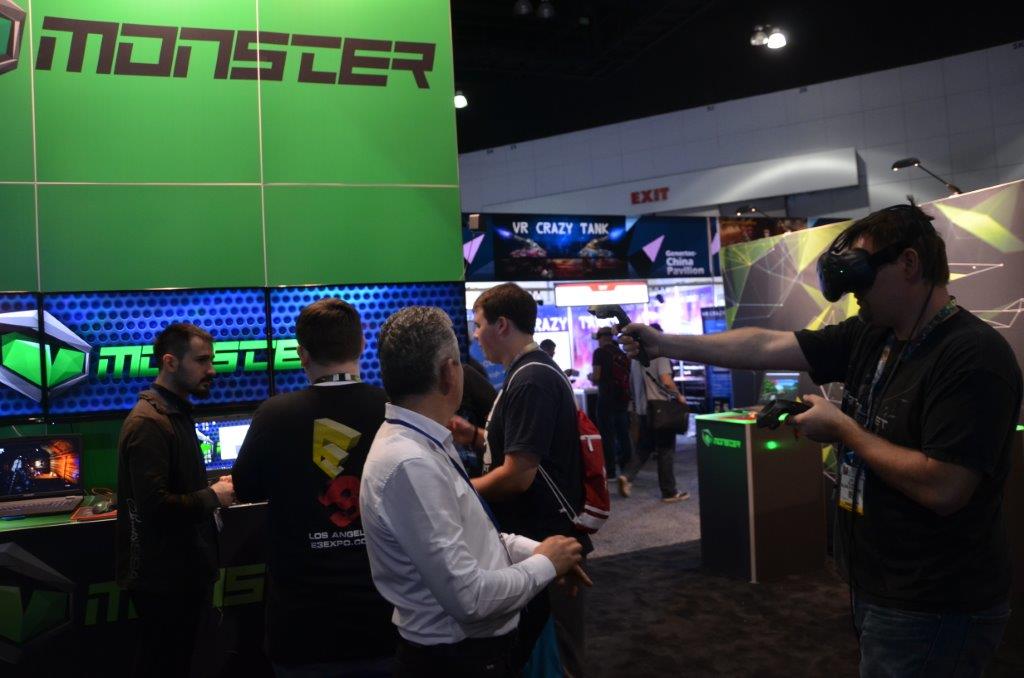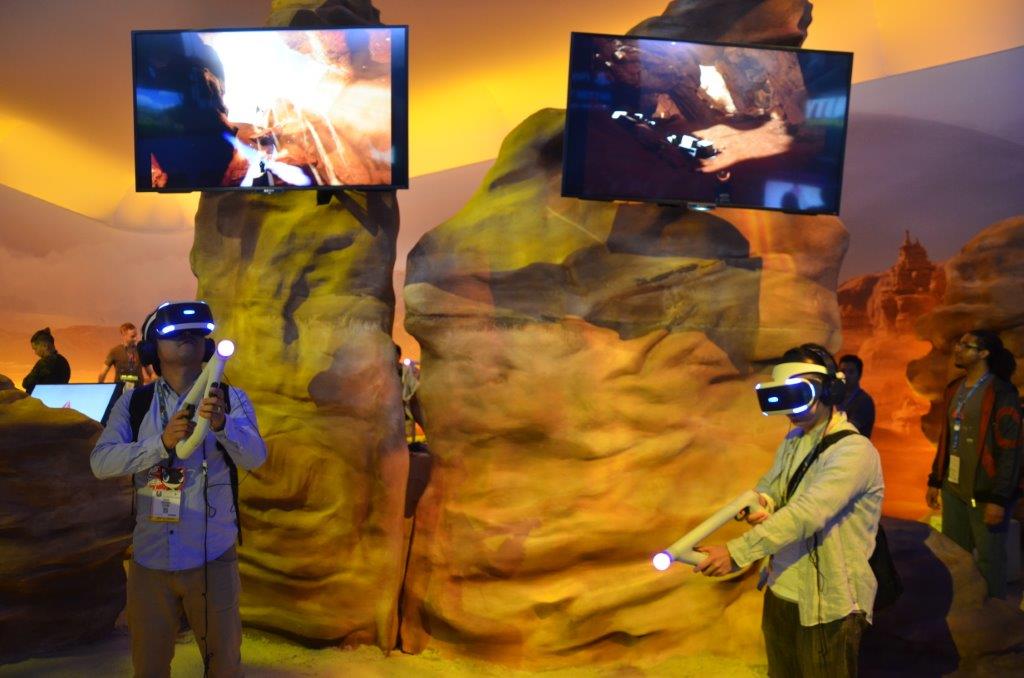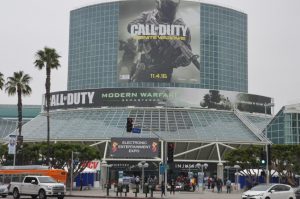
by Lidia Paulinska | Jul 11, 2016
Pepcom event, June 2016 – There is nothing not to like about Pepcom’s press only events. They are always well organized and have so many innovative products to see. The event happened on the evening of Thursday, May 19th, at the Metreon in San Francisco and focused on mobile products. 21 companies showcased their automotive, mobile and lifestyle innovations at the venue.
Here are take some of the products that I was most excited about:
Moshi, a designer of fashion bags, presented the Helios Lite and Helios backpacks that can carry laptops up to 13”(Helios Lite) and 15” (Helios). Made from ultra-lightweight and durable materials with water-repellent coating that protects in different weather conditions. All Moshi bags are very practical with enough pockets to put your valuables and accessories such as pens, chargers, smartphones and cables, as well as being fashionable for a generation of professionals that lead a busy and demanding lifestyle.

Looking over their other products at the Moshi’s table, I found another nice surprise that was on display. They presented the Avanti; Moshi’s flagship on-ear headphones. This stylish product has good sound and featured a nice ergonomic design. The curved stainless steel headband with soft adjustable ear cups made of soft leatherette lets us solely enjoy the music, which is being isolated from noise and with minimal pressure on the ears. Avanti headphones features high-efficiency 40 mm drivers with high dynamic range.
At the Kingston booth, along with their flagship products, the company division HyperX showcased their latest gaming headset; the HyperX Cloud Revolver, which is now shipping on Amazon, Best Buy and Newegg. The HyperX Cloud Revolver is made with a steel frame suspension design, memory foam and premium leatherette ear cups and headband. It is compatible with PC, console and mobile devices. Their latest version continues to bring high performance products from Kingston Technology using the Cloud.

Escort Inc. and Cobra Electronics, held by Cedar Electronics, showcased an array of dash cams: DriveHD Dash Cams and Drive HD CDR895D, which provide help capture against unexpected accidents on the road. The newest addition, CDR 895D is a dual channel dash cam that simultaneously captures the road ahead and road behind in HD video, offering front view resolution of full 1080P HD and rear view of 720P HD. The CDR 895D will be in Q2 with a MSRP of $229.95.

As we live in the mobile era we can’t forget that every device needs to be charged.
Ventev at its booth offered an array of charging hubs and power solutions. Along with new USB charging hub rq600, there were desktop charging hub s500, USB charging hub 400, global charging hub 300 and wall charging hub 200. On the portable power site, Ventev showcased power cells 10000+, 6000+, 6000c, 6000 and power dash r900. The company is also well known as a producer of cables that are strong, tangle-resistant and optimized.

At the end of my list, I would like to mention TripIt, a mobile application that allow you stress-free travel. The program allows to create a master itinerary for your trips and store your travel plans along with maps and directions in one place. It’s a great addition to your busy lives.

by Lidia Paulinska | Jul 1, 2016
E3, June 2016 – Noel Lee, the founder of Monster Cable, is an entrepreneurial icon in the audio & music industries. He personally designs and tunes every headphones that the company manufactures. Since early 2000s he is active in gaming industry and he presented his products at E3 show this year.
In the new presence at the show, Monster was showing off their high performance wireless products, their high power portable devices, automotive audio and the flagship for the show, their Fatal1ty by Monster gaming headsets. These were announced at CES 2016 and are the joint creation of Monster and video gamer Johnathan “Fatal1ty” Wendel, who set the world standard for competitive video gaming by capturing 12 World Championship e-Sports titles.
Creativity, Innovation and Music Matter is Noel’s favorite statement.
He started his company 37 years ago. Monster Cable & Monster Power was born in Noel’s garage. Today he holds 567 patents and has made milestones in design, comfort & performance. With successes like Beats by Dr. Dre he has now moved beyond the status quo, trailblazing with higher-performance headphones/speakers with Pure Monster Sound that Noel personally designs and tunes himself.
Here is Noel’ story.
In 1968 Noel Lee graduated from Cal Poly, San Louis Obispo and joined Lawrence Livermore National Labs’ engineering team. Six years later he left Lawrence Livermore Labs to go on a world tour with his band, Asian Wood. But he did not quit his engineering talents to create a better way to listen to music than through a zip cord. On June 26th, 1978 he registered his new company name “Monster Cable” and began production in his garage in San Francisco. Year later Lee created the first Monster cable and showcased it during summer CES in Chicago. In 1980 his company moved out of the garage to first office 101 Townsend Street in San Francisco. Lee hired his first employees, Tai Min and Shang Yu Chang, who are still with the company today. In 1998 the company moved again to the new headquarters in Brisbane, California.
Of the 567 patents that Noel holds, the first U.S. patent was for the Xterminator electrical connector (1983). He introduced to the market many products: The MacSpeaker, the first computer speaker (1985), Music Logo (1986), Monster XP, the first new high-performance cable since the original Monster cable was born (1991), M Series, with the introduction of a new line of high-end speaker cable (1992). There were also many awards such as three innovation awards for Monsterous product in 2001.
In 2008 he was awarded with the title of “Enterpreneur of the Year” by Ernst & Young after he introduced Monster Game, a new product line for PS2, XBOX and Gamecube. In 2009 he launched Monster iSport headphones and made his appearance in gaming industry. The Fatality headset is his newest premium product that targeting the gaming space, and it was the basis of Monster’s first appearance at the E3 expo. Monster has held a long tradition of having a major presence in consumer, professional and technical trade events and expos, and now the gaming industry has them in their fold.

by Lidia Paulinska | Jun 27, 2016
E3, June 2016 – It is a season for Virtual Reality. At E3, the gaming world show that took place in June at the Convention Center in Los Angeles, the VR was presented everywhere. So far, virtual reality is associated with gaming industry sector mostly because the hard-core gaming community is willing to spend large amount of money for special purpose hardware such as VR glasses and games consoles.
VR hardware was the big draw this year. The major platforms that were at the show took the spotlight since there was no major console release. Dominating the major exhibits were the Sony Playstation VR units, Occulus, and Samsung Gear. Dominating the software showcases was dominated by the HTC Vive. Not counting the companies in the private rooms for demos, there were16 companies on the two expo floors with VR hardware or software. These included: Sony, Occulus, Samsung, HTC, Pop up Gaming, Time of VR, Naughty America, CAPCOM, Carl Zeiss, Alienware, Bethesda, Warner Bros, Ubisoft, Cubicle Ninjas, Razer and Nyko.
The computer-simulated reality dates back 77 years. Here are the key moments in VR history. It started in 1939 at the trade show in New York City where introduced View-Master, a stereoscopic alternative to panoramic postcard. After that 30 years passed while Ivan Sutherland came up with first head-mounted display called “The Sword of Diamocles”. It passed another 30 years when the computer games company Sega introduced wrap-around VR glasses at CES in 1993. Two years later Nintendo produced the gaming console and named it Virtual Boy.
The real gold rush for virtual reality started in 2010. The market research analysts from Deloitte, CCS Insight, Barclays and Digi-Capital accordingly forecast that $24 million of VR devices will be sold by 2018, and revenue from virtual and augmented reality products and content will reach to the $150 billion mark by 2020.

by Tom P Kolodziejak | Jun 26, 2016
E3, June 2016 – Every year at E3, the Entertainment Software Association (ESA), that owns and operates the show, issues essential facts about the gaming sector. The ESA conducts business and consumer research, and provides analysis and advocacy on issues like global content protection, intellectual property, technology and e-commerce, is the valuable source for information such as players demographics and games statistics. Below what ESA’s report shows for this year.
Who is playing and what is the players’ demographics?
63% of U.S. households are home to at least one person who plays video games regularly, which is defined as 3 hours or more per week. There are an average of 1.7 gamers in each game-playing U.S. household. 65% of U.S. household own a device that is used to play video games and 48% of U.S. household own a dedicated game console.
According to the ESA the gamer demographics are as followed: the average game player is 35 years old: 27% under 18 years, 29% age is 18-35 years, 18% is 36-49 and 26% is 50 plus. 59% gamers are male and 41% female. The most frequent female game player is on average 44 years old and the average male game player is 35 years old. Women age 18 or older represent a significant greater portion of the game-playing population (31%) than boys age 18 or younger (17%). There is an equal distribution of female video gamers in age. 50% are 35 and under and 50% older than 35. The average number of years gamers have been playing video games is 13.
We know who is playing but who is buying?
The most frequent game purchaser is 38 years old. 60% of them are male and 40% are female. 52% of them feel that video games provide more value for their money that DVDs (23%), music (14%) or going to the movies (10%). Of the most frequent game purchasers: 41% purchase them without having tried them, 31% download the full game off the company’s website and 30% purchase after downloading the trial version or demo. There is no surprise that 95% of gamers who own dedicated game consoles purchase video games for them.
What and how the gamers play?
48% of the most frequent gamers play social games. The top devices the gamers use are PC (56%), dedicated game console (53%), smartphone (36%), wireless devices (31%) and dedicated handheld system (17%). Top three types of video games played on wireless or mobile devices are: puzzle/board game/card game or game show @ 38%; action games @ 6% and strategy games @ 6% as well. The gamers who play multiplayer and online games spend an average of 6.5 hours per week playing with other gamers online, and 4.6 hours per week playing in-person. 51% of gamers play a multiplayer mode at least weekly.
Why gamers play?
53% of gamers feel that video games help them to connect with friends and 42% believe that games help them spend time with family. 75% of gamers believe that playing games provide mental stimulation or education.

by Lidia Paulinska | Jun 14, 2016
GTC, May 2016 – Jen-Hsun Huang, the founder and CEO of Nvidia, one of the largest American manufacture of graphics accelerator chips, at the GPU conference, in May 2016 in California, announced that VR is going to change the way we design and experience the products. Such as shopping for cars. It is like being in virtual showroom where we can walk around our custom design car, open its door and check out the car’s interior.
At that conference took place two amazing virtual reality demos – Everest VR and Mars 2030.
For the “Everest VR” demo, Nvidia, partnered with Solfar, a Nordic VR games company, and RVX, a Nordic visual effects studio for the motion picture industry. RVX worked on movies, such as “Gravity”, which won the Oscar for Visual Effects. Using advanced stereo photogrammetry, pixel by pixel, a CGI (Computer Generated Image) model of Mount Everest was created.
For “Mars 2030” Nvidia worked with the scientists and engineers at NASA, along with Fusin VR, taking images from dozens of satellite flybys of Mars. They reconstructed 8 square kilometers of the surface of the planet. Even the rocks were hand sculptured, with millions of them being carefully placed, based on the satellite images.
Steve Wozniak, a co-founder of Apple, was invited to experience the Mars 2030 demo. As soon he slipped on his headset he was transported to a rover to drive around the planet.
Here are the key moments in VR history.
It started in 1939 at the trade show in New York City where introduced View-Master, a stereoscopic alternative to panoramic postcard. After that 30 years passed while Ivan Sutherland came up with first head-mounted display called “The Sword of Diamocles”. It passed another 30 years when the computer games company Sega introduced wrap-around VR glasses at CES in 1993. Two years later Nintendo produced the gaming console and named it Virtual Boy.
The real gold rush for virtual reality started in 2010.
That year Google came out with 360 degree version of Street View on Google Maps. In 2012 small company Oculus collected $2.4 million for a production of VR glasses. Two years after, Oculus was purchased by Mark Zuckerberg, the founder of Facebook, for $2 billion! The market research analysts from Deloitte, CCS Insight, Barclays and Digi-Capital accordingly forecast that $24 million of VR devices will be sold by 2018, and revenue from virtual and augmented reality products and content will reach to the $150 billion mark.
So far, virtual reality is associated with gaming industry sector mostly because the hard-core gaming community is willing to spend large amount of money for special purpose hardware such as VR glasses and games consoles. But that is changing. VR is appearing in different sectors of business and entertainment.
Yes, it is known that VR may cause motion sickness for some viewers and there are still a number of obstacles to work on but the technology is unstoppable now.

by Lidia Paulinska | Jun 13, 2016
Embedded Vision Summit, May, 2016 – The original title of Larry Matthies, Senior Scientist from NASA Jet Propulsion Lab, was “Using Vision to Enable Autonomous Land, Sea and Air Vehicles”. Matthies added “the space” to emphasize the surroundings of these vehicles. “How I could forget about space”, he noted. When we think about autonomous vehicles, what comes to our minds are the vehicles on the roads but the scientists are continuing to develop the driverless vehicles for sea, air and space.
Matthies mentioned that the primary application domains and main JPL themes for autonomous vehicles are now as follows: 1. Land – all-terrain autonomous mobility; mobile manipulation 2. Sea: USV escort teams: UUVs for subsurface oceanography 3. Space: assembling large structures in Earth orbit 4. Air: Mars precision landing; rotorcraft for Mars and Titan; drone autonomy on Earth.
Then he described some of the capabilities and challenges that the scientists are facing. One important capability is absolute and relative localization. The key challenges in this domain are: appearance variability, lighting, weather, seasonality, moving objects, and fail-safe performance. Localization has been tested on wheeled, tracked, and legged vehicles in both indoor and outdoor settings, as well as with drones, and Mars rovers and landers.
Another capability the speaker discussed is obstacle detection. This capability includes stationary or moving objects, obstacle type identification and classification, and the ability to determine the capacity and feasibility of terrain traffic. Complementing the detection functions are the understanding of other scene semantics as such landmarks signs, destinations, etc., perceiving people and their activities, and perception for grasping.
The challenges facing the observability sensors are non-trivial. Some of the difficult image characteristics include fast motion, variable lighting conditions such as low light, no light, and very wide dynamic range. The environment can have atmospheric conditions such as haze, fog, smoke or precipitation, and can have many difficult object parameters like featureless, specular, and transparent and terrain types such as obstacles in grass, water, snow, ice, mud. Finally, the last challenge that developers must address is the tradeoff between computational costs versus processor power.









